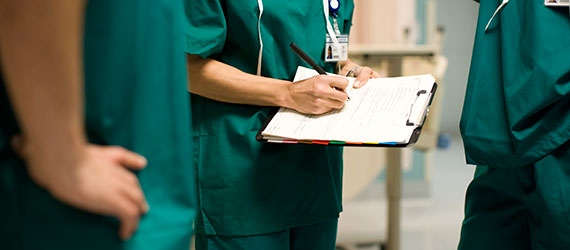Professional cleaning and hygiene to protect health
The role of hygiene, in which cleaning and disinfection are core processes, is to protect people and animals from disease caused by infectious and/or toxin-producing micro-organisms, and increasingly from allergens. It also protects food and other products from spoilage or harmful contamination.
Modern hygiene protects by interrupting routes of transmission and contamination, and by controlling harmful microbes below safe levels – through cleaning and, where necessary, disinfection. In some specific circumstances, such as in operating theatres, sterilization, which is the complete elimination of all organisms, may be required.

Given the constant opportunities for microbes to transmit sufficiently to cause disease or spoilage, opportunities which are increasing with frequent international travel and globalised food supply, it’s a testament to modern hygiene products and procedures that life proceeds as well as it does.
But the challenge is increasing, including from antibiotic-resistant bacteria. Since the discovery and development of antibiotics more than 75 years ago, bacterial infections have been relatively easy to treat. All that is changing and there is absolutely no room for complacency or insufficient attention to hygiene.
The burden of infectious disease
The incidence and burden of infectious disease, even in 21st century Britain, is very substantial. For example:
- In UK hospitals, it’s estimated that more than 300,000 patients each year acquire an infection during their stay. The cost to the NHS is put at £1 billion per annum.
- In 2007, there were 9,000 deaths in healthcare settings where MRSA or C. difficile was identified as the cause or as a contributory factor.
- A recent study by the Food Standards Agency estimates that about 17 million people in Britain each year get a stomach bug, leading to about 19 million days off work or school. Colds, flu, and the whole range of flu-like illnesses that lie somewhere in between will take a similar toll.
- While most stomach bugs result in only limited suffering and temporary incapacitation, and fatalities are relatively rare, an EU scientific committee has estimated that more serious or long-term problems arise in between 3 – 5% of cases of Salmonella and Campylobacter infection.
- The personal costs of infectious disease, in terms of suffering, debilitation and even death, are hard to express in monetary terms, but the costs to society of Foodborne disease has been estimated to be of the order of £750 million.
- The National Institute of Clinical Excellence has calculated that a 10% reduction in C. difficile cases alone would save almost £10 million p.a.
In addition to the burden of infectious disease, the proportion of people who have allergies has risen sharply in the last 50 years, and cleaning now has an increasingly important role in protecting people from the allergens and triggers that can provoke reactions.

The primary costs of spoilage of goods can also be calculated in terms of product lost and the costs of recall and replacement. However, the secondary costs to the economy, or to specific industries, in cases which lead to loss of reputation or the breakdown of entire markets can become almost incalculable. The losses sustained as a result of the collapse of meat markets as a result of the BSE and Foot and Mouth Disease crises provide graphic examples.
The consequences of hygiene failures
Every year there are outbreaks and mishaps that show the consequences of failing or inadequately managed hygiene – disease, discomfort and financial losses. The burden here is focused on the individuals and organizations concerned:
- Further outbreaks of enterohaemorrhagic E. coli continue to occur, following the major incident in 1996 in Scotland attributed to poor hygiene in a butcher’s shop which affected 500 mainly elderly people and resulted in 17 deaths:
- In 2005, over 150 cases, mainly schoolchildren, were affected by an outbreak in S. Wales, linked to the supply of sliced meat. Thirty-one children were admitted to hospital and one child died.
- In 2010, a nursery in N. Ireland was closed after 12 children were affected by E. coli O157, though fortunately none became seriously ill. The following year a nursery outbreak in England led to three children requiring hospital treatment. One required intensive care.
- In 2012, a Belfast restaurant was at the centre of N. Ireland’s biggest E. coli outbreak in which almost 300 people were affected.
- In 2009, over 500 diners at a top English Michelin-starred restaurant were affected in a norovirus outbreak thought to have originated with contaminated oysters.
- In 2011, over 30 diners suffered salmonella poisoning in an outbreak centred on a restaurant in Leeds.
- Cases of C. difficile in hospitals have been reduced in recent years, following hospital-wide outbreaks such as at Stoke Mandeville in 2003/4 which affected over 170 people of whom almost 20 died. But outbreaks continue to take a heavy toll. For example:
- In 2007/8, 18 people died in an outbreak at the vale of Leven hospital in Scotland
- Over 1500 hospital wards in England were closed at some time in 2012 because of norovirus outbreaks.
- In 2012, three babies died in a neonatal unit in Northern Ireland from pseudomonas infection lined to sinks, taps and water systems.